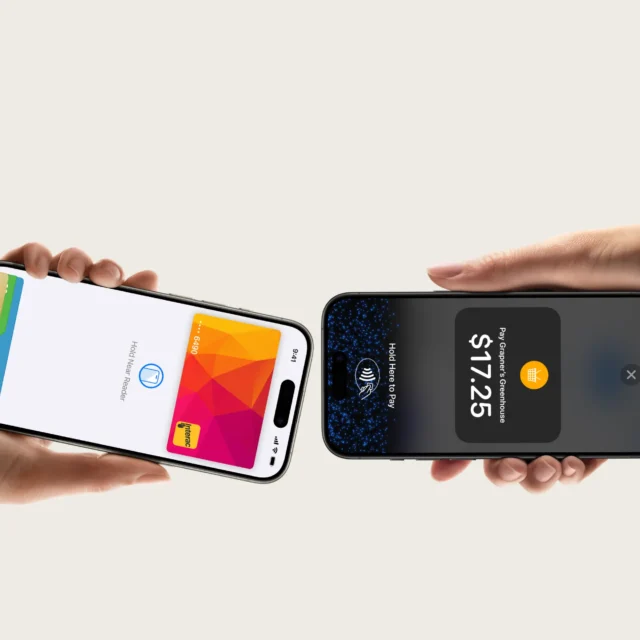The experience age is here. Organizations need to gear up for evolved customer expectations and behaviours in our new hybrid reality. We sat down with William Keliehor, Chief Commercial Officer at Interac Corp. and Hossein Rahnama, founder and CEO of Flybits to get their thoughts on what’s next for personalized customer experiences and payments modernization — what customers are looking for and how organizations can think about creating customer-led, connected digital experiences rooted in trust.
With consumer expectations rapidly rising, delivering personalized, customer-first experiences is becoming table stakes. What is on the horizon for next-generation digital experiences?
Hossein Rahnama, Flybits: Across nearly all ages and market segments, consumers have increased their expectations when it comes to digital experiences. It has become less about being sold to, and more about being served.
Consumers are already acutely accustomed to data-driven personalization in their online lives in the way of content, guidance, and recommendations tailored to their needs and interests. But there is often a lack of transparency on how the consumer can become the co-creator of the experience and make it better.
Trust is foundational to shifting towards a customer-led, participatory approach. I believe organizations that embrace an empathetic lens will gain a competitive advantage, and consent-based personalization is the path to getting there.
William Keliehor, Interac: Personalized experiences have become increasingly integral to engaging with consumers, as the digital economy and payments modernization evolves. That starts with brands showing they truly know and understand what their customers are looking for. It also means putting your customer at the center, removing friction, and enabling them to pay how, when, and where they choose, all while ensuring that their data is being kept private and secure.
Control is also an important factor when it comes to where and how consumers transact. One of the biggest trends we’ve seen, particularly with younger generations in a post-pandemic world, is an uptick in Interac Debit and Interac e-Transfer usage. With a penetration rate of 97%, nearly all Canadians have a debit card, and 57% of them report using it at least once in the previous week, which holds especially true for Gen Z consumers, according to the most recent Canadian Payment Methods and Trends Report.
As contactless payments continue to grow in importance overall, Interac Debit accounts for most of these transactions (62%), and Interac Debit used through digital wallets has grown 137% year over year in 2021.
Canadians want to transact digitally, they want more choice in how they pay, and they want to use their own money. Broadening access to digital payment tools that enable businesses to adapt to consumer payment preferences quickly, is key to delivering the personalized digital experiences consumers have come to expect.
What hurdles do organizations face when it comes to creating and scaling digital value?
HR: Many organizations may not be capitalizing on their data-rich advantages. We often see data sitting in disparate systems, siloed across different departments. Digital challenger organizations, from fintech startups and neo-banks to big tech firms, have built their business model on data-driven relationships.
In the coming years, I believe we’ll start to see financial institutions follow suit with a robust data strategy at their core. Customer-led experiences start with the ability to unlock the value of data while maintaining transparency and trust.
WK: Trust is a key part of the digital value equation. Canadians want products and services that make their lives easier. But they don’t want to sacrifice control over personal information and data.
When exploring new products and services, we need to demonstrate how they will provide meaningful benefits to customers’ lives, while instilling confidence that privacy and security are embedded by design. Balancing privacy concerns and convenience is paramount, as digital experiences become the new norm. As Saul Klein, dean of the Gustavson School of Business, notes, ‘brand awareness is no longer the currency of business – consumer trust is the priority.’
Building consumer trust in today’s digital economy is critical, and something that Interac takes a lot of pride in. Our products facilitate access to your own money. As economic conditions change and new demands emerge equally from younger and older generations, we are committed to unlocking ways that Canadians can interact with their own funds in ways that make their lives easier and enables experiences that hold meaning to them, while maintaining and growing the trust they place in us.
What advantage do organizations have when it comes to meeting today’s customer expectations?
HR: With face-to-face interactions on the decline, the job of building customer relationships now belongs to the data and the digital channels they serve. Customer-led experiences are about mobilizing data as a strategic asset and harnessing the power of the individual contexts of customers, to establish multi-dimensional, trusted relationships.
Consumers are looking for the kind of rich, relevant, and immersive experiences they get from other apps, and their financial institutions are no different. Once customers understand that digital channels provide data-enriched experiences without compromising privacy or security, we’ll likely start to see them welcome an expanded role in their digital lives.
A key trend on the horizon is apps becoming a hub for activities that reach beyond traditional transactions. For example, connecting customers to other networks and digital services under the safety and privacy umbrella of their banking application.
WK: As we saw throughout the pandemic, Canadians are motivated to shop when the spending means something to them. Take supporting a business in their community, for example. Canadians have told us they are willing to take additional steps to support local businesses. Close to half of Canadians (48 per cent) said they were willing to wait longer for delivery or pickup. Fifty per cent were willing to pay up to five dollars more and 31 per cent up to 10 dollars more for the same product, if needed, to support local businesses instead of purchasing from major online retailers.
Similarly, a recent IBM global consumer study found that ‘purpose-driven consumers, who choose products and brands based on how well they align to their values, now represent the largest segment (44%) of consumers.’
As organizations recover from the pandemic’s lingering impacts, they are looking for turnkey opportunities to stimulate new revenue generation opportunities, while delivering on the personalized digital experiences their customers have come to expect. Consumers are looking for increased opportunities to support and build relationships with businesses they trust.
Interac is well positioned to broaden access to the digital tools they needed to help foster stronger relationships, for example, by exploring how the ecosystem could open access to data in a secure and controlled way to deliver value to consumers in ways that hold meaning to them.
We’ve talked about the importance of connected consumer experiences. How does industry collaboration facilitate that connection? Let’s dig deeper into how different industries can collaborate better to create digital experience models that benefit their joint customers, communities, and organizations.
HR: The challenge is to move beyond the digital utility paradigm and become a trusted, central hub in the digital lives of customers, one that securely generates insight from their privacy-preserved data and helps them expand their networks.
When it comes to designing collaborative digital experiences that build trust and consumer confidence, we see four key pillars:
1) Prioritize service, not sales.
2) Design experiences, not transactions.
3) Move beyond passive personalization to conscious engagement.
4) Champion data privacy.
In this new paradigm, financial institutions can become a central hub for a data ecosystem. An ecosystem where data insights are shared across multiple organizations without ever moving data around or sharing personal, identifiable information — all with the customer’s explicit permission.
WK: Transformative change happens when we’re all connected and working together. When fintech providers, financial institutions, and public and private sector organizations come together for a common goal, it’s a win-win for all stakeholders. Customers could benefit from new levels of personalization and value, while businesses can accelerate their ability to innovate, at scale.
Bringing Canada’s financial institutions and the broader tech and business ecosystem together is an important part of solving industry challenges — and creating the next generation of technology-driven solutions and user experiences to help Canadians thrive.
To wrap up, can you describe how data ecosystems could potentially work in real life for financial institutions and customers in the future?
HR: Consider a home buying example. If a mortgage customer’s offer is accepted on a new home, a financial institution could theoretically connect them to moving companies, utilities, internet providers, and other change-of-address essentials. It could help them plan renovations. In a data ecosystem, the customer relationship becomes more than just mortgage payments.
Another example could be around travel. A financial institution could help a consumer plan their next trip: connect them with the right travel insurance, destinations and excursions, airfare and hotel deals, and rewards opportunities. It could also provide access to tools for costing out the trip and to notifications on travel alerts and visa requirements. In a data ecosystem, a financial institution could help you tick off the boxes for your everyday checklists.
WK: It all circles back to collaboration and broadening access to make life easier for Canadians and Canadian businesses with a focus on safety and soundness.
It’s worth exploring how the ecosystem could potentially unlock more value for Canadian debit users that deliver on the trend towards personalization in the experience economy by providing value-added, data-driven benefits in a safe and secure way.
Given our role as the transaction exchange – the customer and their data largely rest with their financial institution – we are in an interesting position to explore how loyalty solutions could be offered to the ecosystem at scale.
After all, driving innovation for the digital economy means coming together to prioritize meaningful and secure experiences for Canadians everywhere.





